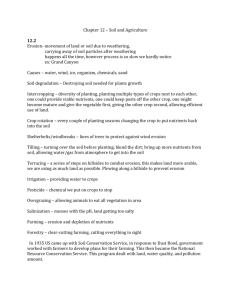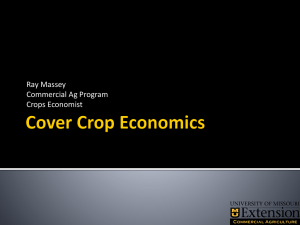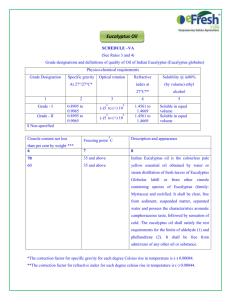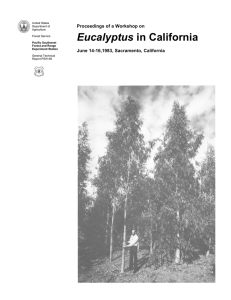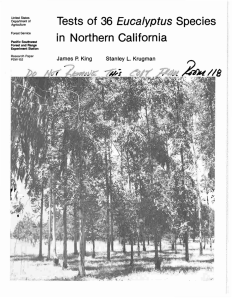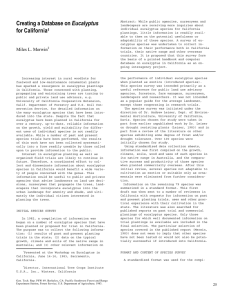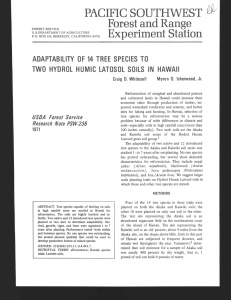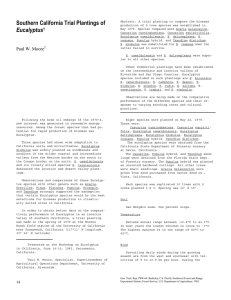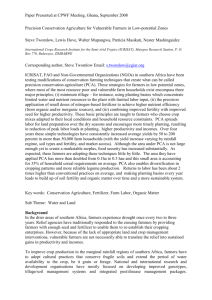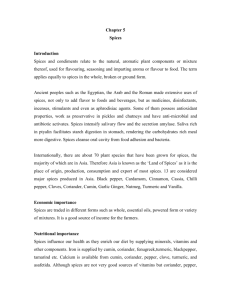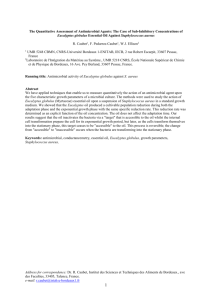Planning model for the implementation of an integrated crop
advertisement
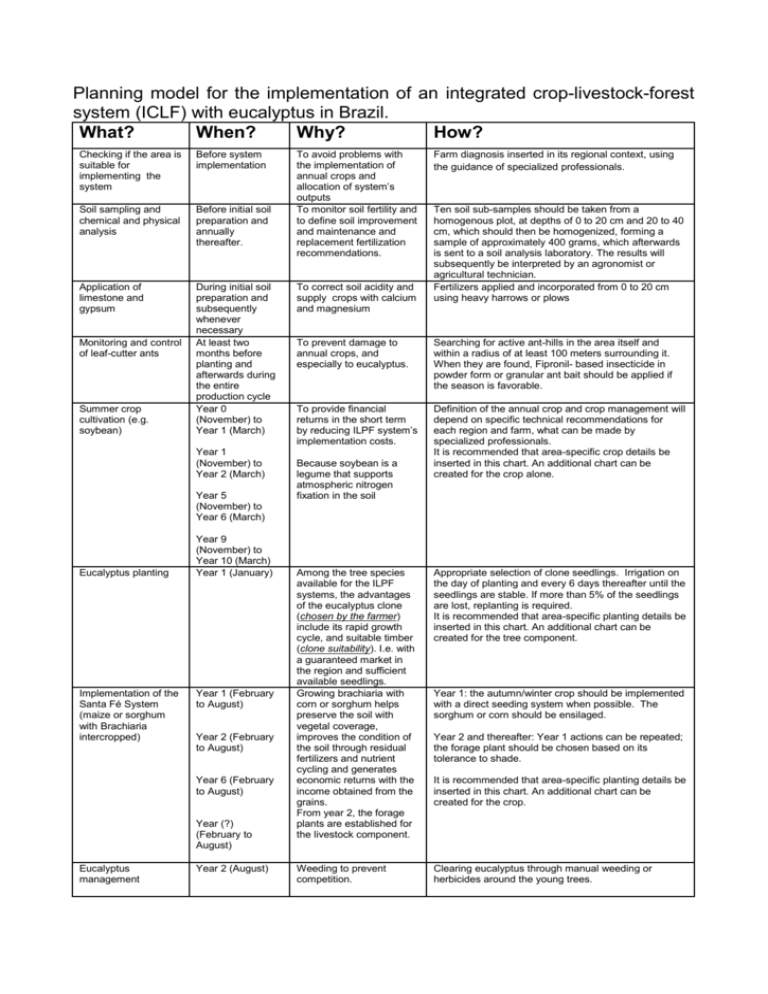
Planning model for the implementation of an integrated crop-livestock-forest system (ICLF) with eucalyptus in Brazil. What? When? Why? How? Checking if the area is suitable for implementing the system Before system implementation Soil sampling and chemical and physical analysis Before initial soil preparation and annually thereafter. Application of limestone and gypsum During initial soil preparation and subsequently whenever necessary At least two months before planting and afterwards during the entire production cycle Year 0 (November) to Year 1 (March) Monitoring and control of leaf-cutter ants Summer crop cultivation (e.g. soybean) Year 1 (November) to Year 2 (March) Year 5 (November) to Year 6 (March) Eucalyptus planting Implementation of the Santa Fé System (maize or sorghum with Brachiaria intercropped) Year 9 (November) to Year 10 (March) Year 1 (January) Year 1 (February to August) Year 2 (February to August) Year 6 (February to August) Year (?) (February to August) Eucalyptus management Year 2 (August) To avoid problems with the implementation of annual crops and allocation of system’s outputs To monitor soil fertility and to define soil improvement and maintenance and replacement fertilization recommendations. To correct soil acidity and supply crops with calcium and magnesium Farm diagnosis inserted in its regional context, using the guidance of specialized professionals. Ten soil sub-samples should be taken from a homogenous plot, at depths of 0 to 20 cm and 20 to 40 cm, which should then be homogenized, forming a sample of approximately 400 grams, which afterwards is sent to a soil analysis laboratory. The results will subsequently be interpreted by an agronomist or agricultural technician. Fertilizers applied and incorporated from 0 to 20 cm using heavy harrows or plows To prevent damage to annual crops, and especially to eucalyptus. Searching for active ant-hills in the area itself and within a radius of at least 100 meters surrounding it. When they are found, Fipronil- based insecticide in powder form or granular ant bait should be applied if the season is favorable. To provide financial returns in the short term by reducing ILPF system’s implementation costs. Definition of the annual crop and crop management will depend on specific technical recommendations for each region and farm, what can be made by specialized professionals. It is recommended that area-specific crop details be inserted in this chart. An additional chart can be created for the crop alone. Because soybean is a legume that supports atmospheric nitrogen fixation in the soil Among the tree species available for the ILPF systems, the advantages of the eucalyptus clone (chosen by the farmer) include its rapid growth cycle, and suitable timber (clone suitability). I.e. with a guaranteed market in the region and sufficient available seedlings. Growing brachiaria with corn or sorghum helps preserve the soil with vegetal coverage, improves the condition of the soil through residual fertilizers and nutrient cycling and generates economic returns with the income obtained from the grains. From year 2, the forage plants are established for the livestock component. Appropriate selection of clone seedlings. Irrigation on the day of planting and every 6 days thereafter until the seedlings are stable. If more than 5% of the seedlings are lost, replanting is required. It is recommended that area-specific planting details be inserted in this chart. An additional chart can be created for the tree component. Weeding to prevent competition. Clearing eucalyptus through manual weeding or herbicides around the young trees. Year 1: the autumn/winter crop should be implemented with a direct seeding system when possible. The sorghum or corn should be ensilaged. Year 2 and thereafter: Year 1 actions can be repeated; the forage plant should be chosen based on its tolerance to shade. It is recommended that area-specific planting details be inserted in this chart. An additional chart can be created for the crop. Eucalyptus management Year 2 (August) Top dressing to meet the plants’ nutritional needs. Top dressing is carried out 90 days and one year after planting. Eucalyptus management Year Year 2 Pruning to improve plant growth and timber quality and to avoid the damage caused by animal browsing when they enter the system. Initial pruning when the diameter of the trunk is greater than 6 cm at a height of 1.30 m. Because they are small, calves cause less damage to young trees. They also require higher quality pasture provided by recently established forage. Increase light incidence between tree rows, improving development of the annual crop and, subsequently, the forages. Providing additional cash flow. When animals are introduced to the system, tree stems must have a diameter greater than 6 cm at a height of 1.30 m. Strategic control of animal parasites is vital to prevent contamination of the recently implemented pasture. Height 0 to 2 m Year 3 Year 4 2 to 4 m 4 to 6 m Introducing weaned calves into the system Year 2 (September) and Year 5 (August) Harvesting 1/3 of trees Year 5 (August) Year 9 (August) Year 13 (August) Trees will be alternately harvested in the rows, prioritizing those with insufficient growth and/or damaged log, which will jeopardize quality for timber. Source: BISCOLA, P.H.N.; CARROMEU, C.; SERRA, A.P.; MAMEDE, R.R.; BUNGENSTAB, D.J. Planning tools for Crop-Livestock-Forestry Integration. In: BUNGENSTAB, D. J.; ALMEIDA, R. G. (Org.). Integrated crop-livestock-forestry systems, a Brazilian experience for sustainable farming. 1ed.Brasília, DF: Embrapa, 2014, v. 1, p. 89-100.

